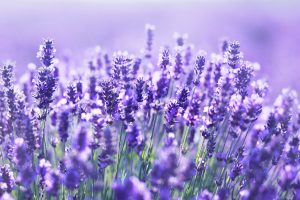Is That The Sweet Scent of Lavender or Chemicals on My Clothes?
I have a challenge for you today…head to your bathroom and start turning over bottles. How many things list “Natural Fragrance” on them? When you read that, do you envision them squeezing a fresh lemon into your Sicilian Lemon Candle, or using high quality therapeutic grade expressed lavender essential oil into your Lavender Body Lotion, how about that Jasmine in your face serum, freshly picked Jasmine flower? Sadly this just isn’t the case. “Fragrance” similar to “Natural Flavors” from our last blog is just a corporations way of sneaking chemicals and synthetic additives into products you are slathering all over your body or using daily in your home. These chemicals may not mean much in one product here and there, but when hidden in products you are using all day long, the cumulative effect can ultimately be quite dangerous.
I’m guessing if you went searching in your cabinets you found the vague word “Fragrance” lurking in many of your daily used products – personal care, cleaning, and household items. Some of the most common places we find fragrance in our everyday items include:
- Shampoo
- Shower Gel & Body Wash
- Shaving Cream
- Body Lotions
- Hair Products
- Laundry Detergents, Fabric Softeners & Dryer Sheets
- Air Fresheners, Room Sprays & Candles
Manufacturers of cosmetics, personal care products and other consumer goods know that scent is an overriding factor in these purchases, especially for women’s body products. The quality and ingredients in the product may be important, but if the scent isn’t pleasing to the consumer’s nose, the product has little chance for success. Since the bottom line (aka the all-mighty dollar) is the driving factor for most mainstream companies out there, getting the scent just right is paramount to their overall market success.
Personal Care Product Scents
Since the largest daily offender is likely the products you are putting on your body from the moment you step into the shower, let’s explore the 10 top scents in women’s body products and why they are used.
- Peppermint is known to be uplifting and stimulating. It’s readily available as well, making it inexpensive to use.
- The sweet scent of Lemon is appealing to the nose and often mixed with sugary scents for a combination of tart and sweet.
- Eucalyptus is pungent yet pleasant. Used in it’s essential oil form it is great for clearing up a stuffy head and cleansing a wound.
- Bergamot has slightly floral citrus scent. The natural essential oil form of Bergamont will be a little pricer than other citrus oils such as lemon, meaning you are more likely to find “fragrance” oil in most body products. We will dig into this more, but “Fragrance” is code for made in a laboratory with synthetic materials to mimic the natural scent at a fraction of the cost of the real thing.
- When used in its essential oil form, the pungent but pleasing smell of Tea Tree is naturally antifungal, antibacterial, antiseptic, antimicrobial and antiviral. You often find this scent in face care products due to the anti-acne properties. Again, these benefits sadly don’t apply when it’s a “fragrance” version of tea tree being used.
- Lemongrass is spicy, citrusy scent. This scent mixes well with florals as well as stronger scents like peppermint. One article stated that lemongrass essential oil is quite affordable but isn’t as shelf stable as the fragrance (made in a lab) version so we most commonly see the “fragrance” version used.
- Grapefruit has a tart yet fresh and fruity scent that is uplifting and energizing. Again, most companies use the “Fragrance” version to make it more shelf stable for their products.
- Coconut, ah the scent of summer. Companies tend to have their own signature (made in a laboratory) coconut fragrance since it is so widely used in the personal care industry.
- Vanilla is the ultimate smell of decadence and perhaps the most popular scent in body care products. You’ll even see products claiming to include vanilla essential oil, but there isn’t such a thing, so more than likely it is synthetic materials made in a lab.
- The Lavender plant is known for its heady but not overly sweet floral fragrance. It can mix with almost anything, is widely used for it’s calming properties and popular scent.

Interestly enough, these scents are all things that can be found in nature. You can get pure, unadulterated versions of these scents and easily make your own personal care products in a matter of minutes with 5 ingredients or less. If DIY isn’t your thing, you can use the Environmental Working Group’s Skin Deep Website or app as a resource to scan labels or search ingredients of your favorite products. You can also search for safer, more natural products using this site or app. It is free and extremely easy to use, they are also updating with more cosmetics and personal care products everyday.
The Dangers of Laboratory Made Fragrance
The problem with using the synthetic version of fragrance is these chemicals can rapidly build up in our bodies. We are bombarded all day everyday with environmental toxins, not even counting what we are putting INTO our bodies. Our system gets overloaded with toxins and simply can’t keep up in excreting them through normal processes like the liver and kidneys. They become taxed and this is when dis-ease sets in.
The biggest thing you can do to protect yourself is to be educated and well informed and vote with your dollars when making product decisions for yourself and your family. Part of the issue with fragrance specifically is that we don’t really know what is included when we see “fragrance” or “natural fragrance” on the ingredient list. Under U.S. regulations and the Fair Packaging and Labeling Act, a manufacturer must list each ingredient of a cosmetic individually, yet Fragrance can be listed as simply that, “Fragrance”. Fragrance and flavor formulas are complex mixtures of many different natural and man-made chemical ingredients that companies formulate and consider as “trade secrets”. Since these formulations are trade secrets, the company is protected from disclosing the actual ingredients. So rather than the fresh squeezed lemon, or actual vanilla extract you are imagining in your lotions, room sprays, and shampoos you are actually applying and inhaling a complex mix of many man-made chemicals.

Fragrance is defined as “any natural or synthetic substance or substances used solely to impart an odor to a cosmetic product” by the US Food and Drug Regulation. This combination of chemicals which gives each perfume, cologne, cosmetic, or personal care product its distinct scent. Interesting enough, a “cosmetic” is defined as “a product intended to be applied to a person’s body to make the person more attractive.” Yes, we all want to smell good, feel good about ourselves, have nice looking skin, etc. The question becomes at what cost? And if there are alternative safer products out there, why do we keep being duped by the marketing experts at the mammoth companies that care only about their profit and not consumer’s health and wellness?
Sadly many of the companies we consider to be safe are some of the worst offenders. Whether you are 5 or 75 you’ve likely used Johnson & Johnson products. In my quest to understand exactly how “fragrances” are made, I came to the Johnson & Johnson website and found the following information:
- A typical oil-based fragrance could have as many as 50 different ingredients, a complex fragrance might mix 50-200 ingredients.
- “Perfumers” (engineers who work in the cosmetic and personal care industry for companies like J&J) combine fragrance ingredients to create a custom scent. The Johnson & Johnson website states that their perfumers are working from an “approved palette of materials” which can include ingredients that are:
- Naturally occuring, meaning extracted from plants and flowers
- Nature-identical, a synthetic ingredient made in a laboratory to chemically mirror naturally occurring scents
- Custom – made, meaning made in a laboratory using different combinations of molecules to create unique or new scents.
The bottom line is that when you think you are using a product with 10 ingredients on the label, one being “fragrance” or “natural fragrance” you could be putting a product with over 200 ingredients on your body. The Johnson & Johnson Lavender Baby Lotion so many of us used on our sweet tiny baby’s sensitive skin could have over 50 chemical or synthetic ingredients. With so many babies having eczema or other skin issues it makes you wonder if we could be contributing to the problem. Use the Skin Deep app to find over 20 baby lotions with a superior clean rating to protect that sweet baby’s skin.
Who Is Looking Out For Our Safety?
When you dig into the International Fragrance Association Standards that Johnson and Johnson follows you will see that it is a lot of feel good words with no information to back it up. They reference standards, yet you can’t even find the actual standards they are referencing. I’ve used J&J as an example here, but most mainstream cosmetic and personal care companies are utilizing very similar practices to create the fragrances that you have been trained to love – Bath & Body Works Warm Vanilla Sugar anyone?
The International Fragrance Association lists 3,059 materials that are reported as being used in fragrance compounds. They even toute “economic” value of fragrance, or the dollar value this industry brings. Of these thousands of materials, some have evidence linking them to health effects including cancer, reproductive toxicity, allergies and sensitivities. Probably the scariest factor when you consider the amount of chemicals in these products is the cumulative effect of fragrances and other chemicals after daily, weekly, yearly exposure. Our body is taxed with so many free radicals each day and it just can’t keep up with removing them. The effect is cumulative and may present in the short or long term as migraine headaches, contact dermatitis, asthma attacks, respiratory difficulties, and mucosal symptoms. The National Institute of Health outlines some of the dangers we face from exposure to air fresheners, cleaning supplies, and personal care products here.
Products that can also include fragrance but aren’t defined as a cosmetic or personal care product, and aren’t applied directly to the body are regulated by the Consumer Product Safety Commission (CPSC) rather than the FDA. This is where your fabric softener, detergent, room sprays and candles would be classified. These products can carry just as much danger as what you are applying to your body.
The Dangers Of Off-gassing
When you walk by someone’s home and they are doing laundry, you are hit with the powerful aroma of their laundry detergent, fabric softener, or dryer sheets being pumped out of the laundry room. Clothes still have the “fresh smell of lavender” days or weeks later as you pull them out of the closet or drawer to put on your body. When you spray a room spray in the bathroom your lungs are filled with whatever synthetic chemicals are fragrancing that spray.

The chemicals lurking in these products continue to offgas long after the laundry is neatly stacked in your drawers. Offgassing is a term that describes the release of gases, chemicals, and volatile organic compounds (VOCs) into the air from cleaning products, building materials, and other materials that we have inside our homes and buildings. Outgassing contaminates the air we breathe and minimizing the materials that are outgassing in your home is key to overall wellness. You can’t control your workplace, school, or the public places you frequent, but you can control your home and considering that is where you spend most of your time, it’s crucial to keep it safe.
Candles are another strong offender when it comes to fragrances. The addition of fragrance is a common practice in this industry with 75-80% of candles sold in the US being scented. When burning a candle, water vapor, carbon dioxide and fragrance are released into the air. Even on a candle website, candles.org they admit that scented candles contain a combination of natural and synthetic fragrances. Stating that “these fragrance materials are derived from essential oils or from synthetic aroma chemicals. The addition of fragrance to candle formulation should be carefully monitored to ensure clean and proper burning.”
You Are Your Own Advocate
As a consumer, and the gatekeeper of the products that come into my home, I feel that I’m entitled to know what exactly is in those products. Then I can make an educated decision on if I want to use them or not. That may be the most infuriating part of the “fragrance” issue. The fact that a company can add up to 200 ingredients to create a custom fragrance recipe and not disclose what those ingredients are to me just doesn’t seem right. It is clear whether it is in the personal care, cleaning, cosmetic or even food industry big business is not looking out for the consumer, they are looking out for their profits.
We are in control of what we use in our homes, on our bodies, on our babies. For me, that means choosing safe options, perhaps making a DIY item (if it’s easy enough) with pure ingredients that I recognize and understand, and limiting the use of products that include ingredients I believe to be toxic or unrecognizable. It’s small steps to educating ourselves, making good selections and voting with our dollars. Read labels, use the tools at your disposal like the EWG Skin Deep app, googling ingredients you don’t understand, and using products with minimal ingredient lists (remembering that “fragrance” adds 50-200 ingredients with one word). Don’t beat yourself up over anything you are using now or have used in the past, just tackle one room or category at a time, do a product makeover, and get yourself on the wellness track!
Stay Well Friends,
Stefanie



